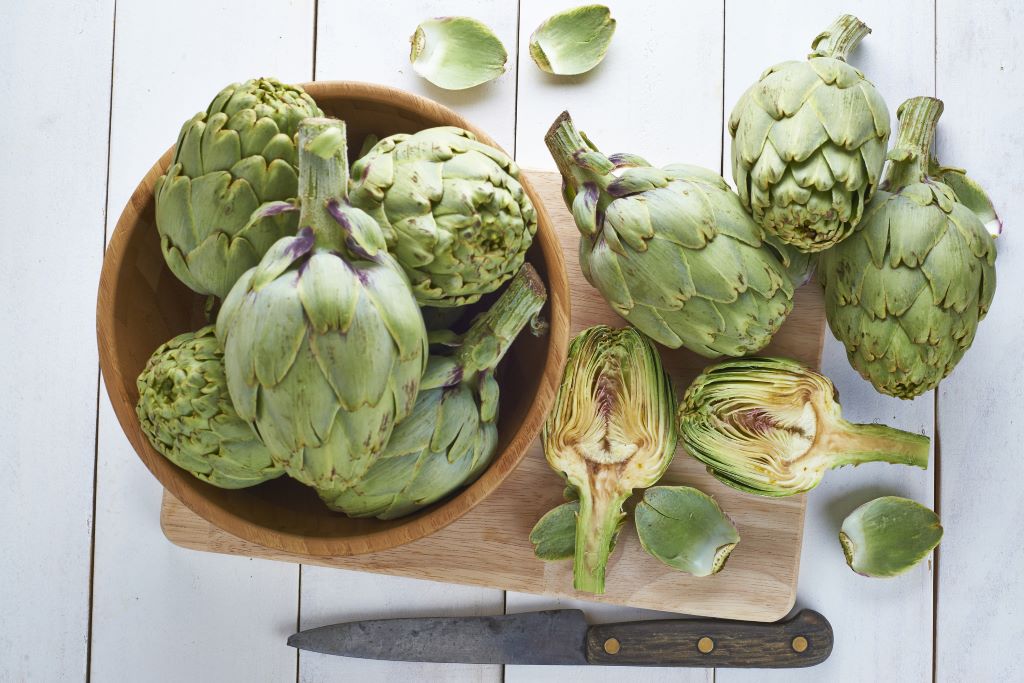
29 Apr Unlocking the Flavor of Artichokes: A Guide to Boiling Times and Beyond
Artichokes, the majestic thistle buds with a tender heart, offer a unique and delicious culinary experience. Boiling is one of the most common ways to prepare artichokes, making them soft, flavorful, and ready to enjoy. This article will explore optimal Cynara boiling time, essential pre-and post-boiling tips, and delightful ways to serve your perfectly cooked artichokes.
Understanding Artichokes (Cynara)
The artichoke plant (Cynara cardunculus var. scolymus) is a member of the thistle family. The edible portion is the flower bud before it fully blooms. Artichokes come in various sizes, with the most common varieties being the large Globe artichokes and the smaller Baby artichokes.
Boiling Artichokes: Preparation Matters
- Selection: Choose artichokes with tightly closed leaves that feel heavy for their size and squeak when squeezed.
- Trimming: Cut off the stem, leaving about an inch. With kitchen shears, trim the sharp tips of the outer leaves.
- Lemon: Cut a lemon in half and rub the cut side over the trimmed edges of the artichoke to prevent browning.
- Acidulated Water: Prepare a large pot of water, adding a squeeze of lemon juice or a tablespoon of vinegar to prevent discoloration.

How Long to Boil Artichokes
Boiling time depends on the artichoke’s size:
- Baby Artichokes: These tender varieties cook the fastest, usually within 15-20 minutes.
- Medium Artichokes: Boil for approximately 25-35 minutes.
- Large Globe Artichokes: These require the longest cooking time, around 40-50 minutes.
Test for Doneness: To ensure your artichokes are perfectly cooked, gently pull an outer leaf. If it comes off easily, they’re ready. You can also pierce the base with a fork or knife – it should go through with a little resistance.
Post-Boiling Essentials
- Drainage: Immediately remove cooked artichokes from the water and drain them upside down to prevent them from becoming waterlogged.
- Cooling: Allow the artichokes to cool slightly before handling.
Read Also: Unveiling the Secrets of Perfect Boiling
The Art of Serving Boiled Artichokes
Now comes the rewarding part – enjoying your tender artichokes! Here are a few serving ideas:
- Classic and Simple: Serve warm artichokes with melted butter, aioli, or a vinaigrette for dipping the leaves. To eat, pull off an outer leaf, dip the fleshy base in your sauce, and gently scrape off the soft part with your teeth. Discard the rest of the leaf. Keep working your way towards the center until you reach the fuzzy choke. Remove the choke to reveal the delicious artichoke heart.
- Stuffed Artichokes: Before boiling, gently spread the leaves and fill the artichoke with a flavorful breadcrumb mixture.
- Salads and More: Add chopped artichoke hearts to salads, pasta dishes, or use them as a unique pizza topping.
Extra Tips for the Perfect Boil
- Salt: Add a generous amount of salt to the boiling water to season the artichokes.
- Flavor Enhancers: Consider adding bay leaves, garlic cloves, or a sprig of fresh herbs to the water for extra flavor.
- Don’t Overcrowd: Ensure your pot is large enough to comfortably accommodate the artichokes without overcrowding them, guaranteeing even cooking.
Beyond Boiling
While boiling is a popular method, artichokes can also be roasted, grilled, or steamed. Experiment with different cooking techniques to find your preference!
Storing Artichokes
- Fresh Artichokes: Store unwashed, in a plastic bag in the refrigerator for up to a week.
- Cooked Artichokes: Keep leftovers in the refrigerator for a couple of days in an airtight container.
By understanding the nuances of artichoke boiling times, preparation techniques, and serving possibilities, you’ll transform this unique vegetable into a culinary masterpiece. Enjoy!



Sorry, the comment form is closed at this time.